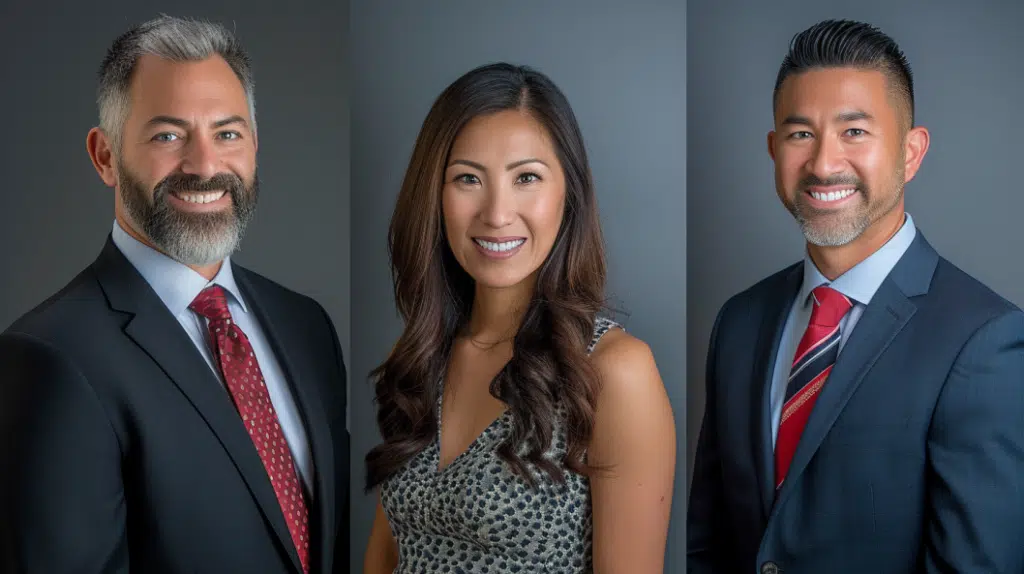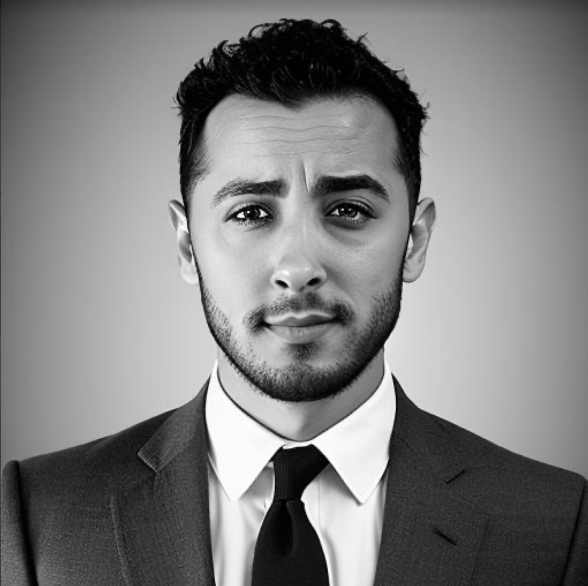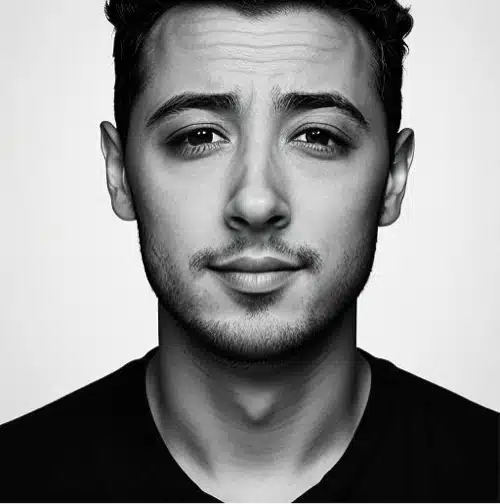The Ultimate Guide to Professional Headshots for Healthcare Professionals
In the healthcare industry, where trust, professionalism, and expertise are paramount, professional headshots hold significant importance. These images are often the first point of interaction between healthcare professionals and their potential patients, colleagues, or collaborators. A well-taken professional headshot can convey a sense of reliability, approachability, and confidence, qualities highly valued in healthcare settings.
The role of professional headshots in healthcare extends beyond just making a good first impression. They are integral to personal branding, helping to humanize practitioners in a field that is increasingly becoming digital. Whether it’s for hospital websites, medical journals, social media profiles, or conference materials, a professional headshot serves as a visual representation of a healthcare professional’s identity.
Understanding the Basics of a Great Headshot
Crafting a great headshot, especially in the healthcare industry, involves more than just standing in front of a camera. It’s about conveying a message of trust, competence, and approachability. Understanding the basics of a great headshot is crucial for healthcare professionals aiming to make a positive and lasting impression.
Key Elements of a Professional Headshot
A professional headshot is distinguished by several key elements:
- Clarity and Quality: High-resolution images with sharp focus allow for details to be seen clearly, reflecting the professional’s attention to detail.
- Appropriate Attire: In healthcare, attire in headshots should communicate professionalism. Lab coats, scrubs, or formal business attire are common and should be neat and well-fitting.
- Expression: A genuine, approachable expression is vital. A smile or a neutral, confident expression can make the professional seem more accessible.
- Pose: A natural, upright pose conveys confidence. The professional should face the camera directly or with a slight angle, maintaining good posture.
In summary, a great headshot for healthcare professionals is a blend of technical precision and thoughtful presentation. It requires paying attention to details like attire, expression, background, lighting, and angle—all of which come together to create an image that accurately represents the professional’s identity and expertise.
Dressing for Success: Tips for Healthcare Professionals
For healthcare professionals, dressing for a headshot goes beyond mere aesthetics; it’s about embodying the qualities of professionalism, reliability, and trustworthiness that are so crucial in the healthcare industry. Here are some guidelines to help ensure your attire sends the right message.
What to Wear for Your Headshot
- Reflect Your Role: Wear what you would typically wear to work. For doctors and nurses, this might mean a lab coat or scrubs. For administrators or executives, business attire is appropriate.
- Fit Is Key: Ensure your outfit fits well. Clothes that are too tight or too loose can detract from the headshot’s professionalism. A well-fitting outfit conveys attention to detail and a sense of pride in one’s appearance.
- Keep It Neat: Your attire should be clean and pressed. A pristine appearance in your headshot reflects your commitment to professionalism and care in your work.
Colors and Patterns to Consider
- Solid Colors Work Best: Solid colors are less distracting and focus the viewer’s attention on your face. Choose colors that complement your skin tone and make you look vibrant and healthy.
- Neutral Tones: Neutral tones like blues, grays, and whites are safe and professional choices. These colors also have the added benefit of conveying calmness and trustworthiness, qualities valued in healthcare settings.
- Avoid Loud Patterns: Busy patterns can be distracting in a headshot. If you prefer not to wear solid colors, opt for subtle patterns that won’t take attention away from your face.
- Consider the Background: Choose attire colors that contrast well with the background of your headshot. You don’t want to blend into the background, nor do you want to clash with it.
Technical Tips for High-Quality Headshots
Achieving a high-quality headshot involves understanding the technical aspects of photography, whether you’re setting up a DIY session or deciding to invest in professional photography. These technical tips can guide you in capturing a professional headshot that conveys the right message.
Camera Settings and Equipment
- Camera Quality: A DSLR or a mirrorless camera typically yields the best results due to their superior sensor size and ability to use different lenses. However, modern smartphones also have advanced camera capabilities suitable for high-quality headshots if a professional camera is not available.
- Lens Choice: Use a lens that offers a flattering perspective. A lens with a focal length of 50mm to 105mm on a full-frame camera (or equivalent on crop sensors) is ideal for portraits because it provides a natural look without distortion.
- Aperture: Set your camera to a wide aperture (low f-number) to create a shallow depth of field. This blurs the background and keeps the focus sharply on your face. An aperture of f/2.8 to f/5.6 is a good range to start with.
- ISO: Keep the ISO as low as possible to avoid noise. If you’re indoors, you may need to increase it, but try to use additional lighting to keep the ISO under 800.
- Shutter Speed: Use a shutter speed fast enough to eliminate any risk of motion blur. A rule of thumb is to use a speed at least as fast as 1/(focal length of the lens), but ensuring at least 1/200s is a safe bet for headshots.
DIY vs. Professional Photography
- DIY Photography: With the right equipment and some understanding of camera settings, it’s possible to capture a decent headshot yourself or with the help of a friend. The key is to pay attention to lighting, background, and composition. Practice and patience are essential, as is reviewing online tutorials to enhance your photography skills.
- Professional Photography: Hiring a professional photographer is often worth the investment for a headshot that truly stands out. Professional photographers not only have the skills and equipment needed but also understand how to pose subjects in the most flattering way and manipulate lighting to best effect. Their expertise in editing can also make a significant difference in the final result.
The Impact of Headshots on Professional Opportunities
In the healthcare industry, where the personal connection and trust between healthcare providers and patients are paramount, the role of professional headshots cannot be understated. These images do more than just fill space on a website or a profile; they are essential tools for building relationships and opening doors to new professional opportunities.
Building Trust with Patients
A professional headshot is often the first point of contact between healthcare providers and potential patients. Before a patient ever steps foot in a clinic or hospital, they’re likely to have seen the headshot of the healthcare professional they’re considering. A warm, approachable headshot can help to ease anxieties and build trust from the outset.
Enhancing Your Professional Brand
For healthcare professionals, headshots are also a critical component of their personal and professional branding. They reflect the individual’s professional identity and the values and quality of care they provide. A high-quality, professional headshot can set you apart in a competitive field, showcasing your commitment to excellence and attention to detail.
Conclusion: Making Your Headshot Stand Out
In the healthcare profession, where trust, competence, and approachability are of utmost importance, a professional headshot is much more than a simple photograph. It’s a vital component of your personal and professional identity, offering a visual introduction to who you are and what you stand for.
For healthcare professionals, a standout headshot is not just an investment in a photo; it’s an investment in your career, your personal brand, and the relationships you build with patients and peers. It can open doors to new opportunities, enhance your visibility in the field, and play a crucial role in the first impression you make. Therefore, take the time to ensure your headshot accurately reflects the quality, professionalism, and approachability that you bring to your role. By doing so, you’re not just capturing an image; you’re setting the stage for your future success and the impact you’ll have in the healthcare industry.
FAQs About Professional Headshots for Healthcare Professionals
Q: How often should healthcare professionals update their headshots?
A: It’s recommended to update your headshot every 2-3 years or whenever there’s a significant change in your appearance (e.g., hairstyle, glasses) or professional role. Keeping your headshot current ensures that it accurately represents you to patients and colleagues.
Q: What should I wear for my healthcare professional headshot?
A: Wear attire that reflects your role in healthcare. For clinical roles, clean and pressed lab coats or scrubs are appropriate. For non-clinical roles, business professional attire is suitable. Choose solid colors or subtle patterns, and ensure your outfit is well-fitting and neat.
Q: Should I smile in my professional headshot?
A: Yes, a genuine smile can make you appear more approachable and trustworthy, qualities that are valuable in healthcare. However, the most important thing is to look natural and comfortable; a forced smile can appear insincere.
Q: Can I take my headshot with a smartphone?
A: While professional photography is recommended for the best quality, modern smartphones with high-resolution cameras can produce a good quality headshot if used correctly. Pay attention to lighting, background, and composition to ensure the best results.




